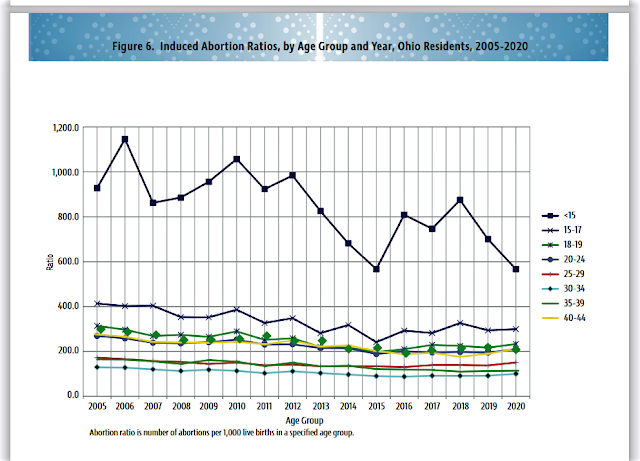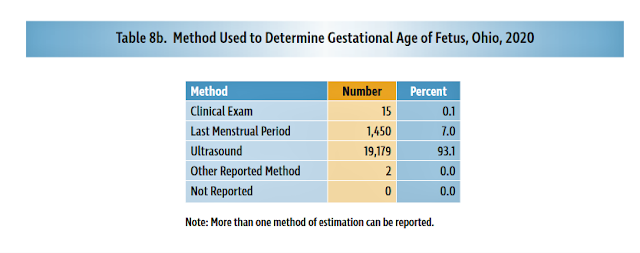The American Medical Association issued a statement on May 5, 2022, pointing out that dozens of medical organizations consider abortion to be safe and part of medical care.
"The American Medical Association is deeply concerned by the contents and implications of the draft Supreme Court opinion for the Dobbs vs. Jackson Women's Health Organization case that became public this week.
“This opinion would lead to government interference in the patient-physician relationship, dangerous intrusion into the practice of medicine, and potentially criminalizing care.”
“As discussed in an amicus brief filed with the Court, the AMA and more than two dozen leading medical organizations believe abortion is safe medical care that is a decision to be made between the patient and the physician, subject to the physician’s clinical judgment, and the patient’s informed consent.”
(Gerald E. Harmon, M.D. President, American Medical Association. “AMA statement on draft Supreme Court opinion.” Press Release, American Medical Association. May 05, 2022.)
Other health organizations have denounced the Supreme Court's draft ruling.
National Nurses United, America's larges union representing nurses, called the draft ruling an “unconscionable threat to women’s health and security."
“Nurses will stand with women and gender justice supporters across this country to oppose political, legal, and employer restrictions on women’s health services, including the right to reproductive and other family planning services,” NNU President Jean Ross said in a statement.
The American College of Obstetricians and Gynecologists urged members to spread the word that the draft is not an official ruling by the Supreme Court and has no immediate effect on laws affecting abortion access. The group said it is gearing up for battles in state legislatures that will decide abortion access.
The organization also said it would be preparing resources so members can discuss abortion as a necessary component of healthcare and to counter "medical misinformation about abortion that can drive restrictive policies."
"Abortion is an essential part of comprehensive medical care," the group said.
The World Health Organization (WHO) acknowledges that legal restrictions on abortion do not result in fewer abortions. Rather, they force pregnant people to pursue riskier abortion services, reports the Center for Reproductive Rights.
The Turnaway Study — which evaluated the effects of being denied an abortion — found that people denied an abortion had a nearly four times greater chance of being below the federal poverty level.
Pregnant people who were denied an abortion were more likely to stay in contact with a violent partner and ultimately raise the child alone.
(Diana Greene Foster. The Turnaway Study: Ten Years, a Thousand Women, and the Consequences of Having—or Being Denied—an Abortion. June 02, 2020.)
Another report found that women who were denied an abortion were three times more likely to be unemployed than those who received an abortion.
(Diana Greene Foster, M. Antonia Biggs, Lauren Ralph, Caitlin Gerdts, Sarah Roberts, and M. Maria Glymour. “Socioeconomic Outcomes of Women Who Receive and Women Who Are Denied Wanted Abortions in the United States.”American Journal of Public Health 108, 407_413. 2018.)
Being denied an abortion has also been associated with higher levels of anxiety and depression.
(MA Biggs, UD Upadhyay, CE McCulloch,, DG Foster. “Women’s Mental Health and Well-being 5 Years After Receiving or Being Denied an Abortion: A Prospective, Longitudinal Cohort Study.” JAMA Psychiatry. 2017;74(2):169–178.)
This burden largely falls on Black and Latino communities, who – due to redlining and systematic racism in housing practices – are disproportionately living in low income communities and more likely to face greater barriers to accessing healthcare, said Ianthe Metzger, the director of state media campaigns with Planned Parenthood Federation of America.
“Abortion restrictions create impossible hurdles that nobody should have to overcome in order to get essential healthcare. And if more people are denied abortion, more people will be forced to carry a pregnancy to term at great personal health risk,” Metzger said.
Let's Focus On Ohio
Ohio, which has passed dozens of abortion restrictions in the past four decades, will likely outlaw abortion. The Ohio Senate president has said he wants the Republican-dominated legislature to approve a ban after the Supreme Court ruling is released.
What are we dealing with as far as statistics show? Allow me to focus on specifics as they relate to Ohio and Scioto County. The following information is taken from “Induced Abortions in Ohio, 2020” from the state health department. This view will give you direct information about the latest abortion statistics available for Ohio.
(John Paulson, Health Services Policy Supervisor. “Induced Abortions in Ohio, 2020.” Ohio Department of Health. September 2021.)
Several trend comparisons
in the 2020 Annual Abortion Report date back to 2004. A
total of
20,605 induced pregnancy terminations were reported in Ohio for 2020;
including 19,438 obtained by Ohio resident women (94.3%). This
represents a 3% increase in induced pregnancy terminations from 2019
to 2020. Overall, since 2000 there has been a steady decline in
terminations. When examined from 2000 to 2020, the annual decline
averaged approximately720 per year (Figure 1)
While the age distribution
of women obtaining abortions has remained relatively
unchanged
since 2003, the age-specific abortion rates for women under age 25
have steadily decreased (Figure 5).
Approximately one in twelve women who obtained abortions in 2020 were under 20 years of age; with another 29% between the ages of 20-24 years of age (Table 2).
Approximately 86% of women with known marital status who obtained abortions were never married, divorced, or widowed (Table 2).
More than half of all induced abortions involved pregnancies of less than nine weeks (62%); with approximately 25% involving pregnancies of nine to twelve weeks (Table 2).
There were 441 abortions
in 2020 involving pregnancies of nineteen or more completed weeks of
gestation (Table 2).
Approximately 14% of women who obtained abortions and whose marital status was known were married or separated (Table 2). Approximately 44% of resident women who obtained abortions and for whom race was reported were White; 48% were African American; 3% were Asian/Pacific Islander; and 5% reported more than one race (Figure 2).
The 2020 Ohio abortion rate was 8.7 per 1,000 resident women ages 15-44 years old; slightly increased from the rate in 2019 (Figure 4).
The 2020 Ohio resident abortion ratio was 151 abortions per 1,000 live births; increased from the ratio in 2019 (Figure 4).
The proportion involving abortions of less than nine weeks increased from 53% in 1998 while the proportion between nine and twelve weeks declined from 34% to 25% (Figure 7).
That represents an
increase from the 356 reported in 2019. The abortion reporting
form
requests methods used to determine gestational age:ultrasound
was used in 93% of cases (Table 8b).
The vast majority of reported abortions were obtained in six major metropolitan areas of Ohio (Table 6).
Scioto County
Check out Scioto Numbers and Ages (Table 3) (Table 5a):
"I've always known what was at stake. That's why my fight against threats to reproductive freedom, including abortion, has always been unyielding. These decisions should've never been left up to the courts. These rights must be secured and protected beyond elections."
– Rep. Renitta Shannon, 42, Georgia House of Representatives
To Close
Health organizations oppose the overturning of Rowe v. Wade. The risks are obvious. Increased threats to women's health are sure to become commonplace when the Supreme Court issues its opinion.
Good old, unhealthy Scioto County – with the worst health outcomes in Ohio – has a connection that helped pass Senate Bill 157, requiring Ohio doctors to perform life-saving care on fetuses that survive failed abortions.
“The bill ensures taxpayer dollars do not directly or indirectly fund abortions by prohibiting a physician from being employed at a state-funded higher education or medical institution if they serve as a consulting physician for an abortion clinic,” said the Republican senator who sponsored the legislation, Terry Johnson, in a statement when the Senate passed the measure back in October.
SB 157 requires the Department of Health to revoke the variances if the consulting physicians teach or are employed by a university, state hospital or other public institution.
Johnson, a retired doctor, represents a district that holds Adams, Brown and Clermont counties and parts of Lawrence Scioto counties.
Abortion-rights advocates say no babies die during botched abortions in Ohio since the state bans abortion at 20 weeks of gestation when a fetus can’t survive outside of the womb.
However, Republican bill sponsors Johnson of Scioto County and Steve Huffman of the Dayton area point to research from the Christian public policy group the Family Research Council claiming that between 2003 and 2014, at least 143 infants died after being born alive during an abortion procedure in the U.S., who later died since they weren’t allegedly given life-saving treatment.
The Family Research Council said it received the information from a report published by the Centers for Disease Control and Prevention, which notes the number may be low, but also notes that it was looking at all terminations of pregnancy, including “spontaneous termination of pregnancy,” which are miscarriages at less than 20 weeks’ gestation.
The bill also contains a provision that would make it harder for two Southeast Ohio abortion clinics to remain open under a variance to the requirement that they obtain a written transfer agreement for emergencies – one of several restrictions the Ohio General Assembly has used to chip away at abortion access over the last decade
Obstetricians caution that SB 157 complicates their work and robs mothers of the opportunity to hold their babies and say goodbye when pregnancies don’t go as intended.
Sometimes, the fetus develops conditions that would make it unlikely to survive birth, and continuing the pregnancy puts the mother’s life at risk. In such cases, doctors and women sometimes decide to induce labor. But under SB 157, the doctors have to whisk the babies off for emergency treatment that is often futile and rob the mother of a chance to hold the child.
Physicians who violate SB 157 would be charged with a first-degree felony.
Lauren Blauvelt-Copelin, Vice President of Government Affairs and Public Advocacy, adds …
"The bill's purpose is to stigmatize essential health care, criminalize doctors, and eliminate abortion access. The law that SB 157 purports to create already exists in our state. But lawmakers used this bill as a Trojan horse to hide the true, insidious intent of the bill: A last-minute, targeted restriction on abortion providers (TRAP law) that would allow the Department of Health to revoke ambulatory surgical licenses, shutting down health centers and fully eliminating abortion access in Southwest Ohio."
Kersha Deibel CEO of Planned Parenthood Southwest Ohio Region says …
"At this moment, we're at a crisis point for abortion access in Ohio and across the country. Anti-abortion politicians have made it their job to bury abortion providers under so many TRAP laws that providing and accessing essential health care to Ohioans has become an obstacle course. Stripping abortion care from Southwest Ohio will cause havoc that disproportionately impacts our communities. Abortion is still legal in Ohio. This isn't the end, and we will continue to fight."
(Laura Hancock. “Ohio House passes ‘born alive’ abortion bill that would likely shutter last clinics in Dayton, Cincinnati.” Cleveland.com. December 08, 2021.)
Ohio already requires medically unnecessary contracts (called variances) between abortion providers and physicians who hold admitting privileges at local hospitals. The proposed amendment to SB 157 would make this requirement even more extreme, disqualifying all physicians who teach medical students or are affiliated with public hospitals and institutions from entering these contracts with abortion clinics.
To close, let me say this – with reproductive rights on the line, health and wellness companies are now getting creative on how to offer access to women’s health needs in the absence of federal protection. One of these women’s healthcare companies is Stix. Billed as a medically-backed reproductive and vaginal health brand, they’re on a mission to “expand access, shrink stigma, and give people the tools they need to manage their health.”
“Do-ti-yourself” instead of protection? Kiki Freedman, CEO of the company Hey Jane cited research by the Guttmacher Insitute. “In a post-Roe world, abortion care via mail will likely become the most viable form of access for most of the country.”
It seems a number of at-home abortion pill startups are positioning themselves to fill some of the void.Sites such as Hey Jane, Choix, and Just the Pill have launched in recent years to offer women in a limited number of states abortion prescriptions via telemedicine and delivered by mail. Thanks to the easing of regulations at the federal level, these startups say their services can cut travel time, in-office wait periods and costs. However, they still face significant regulations and – increasingly – a shifting legislative environment as they seek to grow.
Will the growth happen?
Consider that Ohio women would have to travel up to 339 miles and could spend $400 or more on driving expenses if the state outlaws abortion, according to research by Ohio State University and the University of Cincinnati.
(Laura Hancock. “In a post-Roe Ohio, women could have to travel up to 339 miles for an out-of-state abortion.” The Plain Dealer. Cleveland. June 06, 2022.)
The best-case scenario for Ohio women seeking an abortion is Michigan and Pennsylvania keeping abortion access, the research says. That would mean that women in 62 of Ohio’s 88 counties would have to travel 115 miles to 279 miles to a clinic.
That doesn’t include the cost for lodging, or cost of childcare.
In Ohio, 62.7% of women who had abortions in 2020, according to the state’s abortion report, reported having at least one child.
This could make abortion cost-prohibitive for many Ohio women.
"Abortion is a moral choice. It is an ethical choice. It is your choice. There are no good abortions; there are no bad abortions; there is only the abortion you need. FULL STOP."
– Lizz Winstead, 43, (co-creator/former head writer of The Daily Show) and founder of the non-profit Abortion Access Front













No comments:
Post a Comment